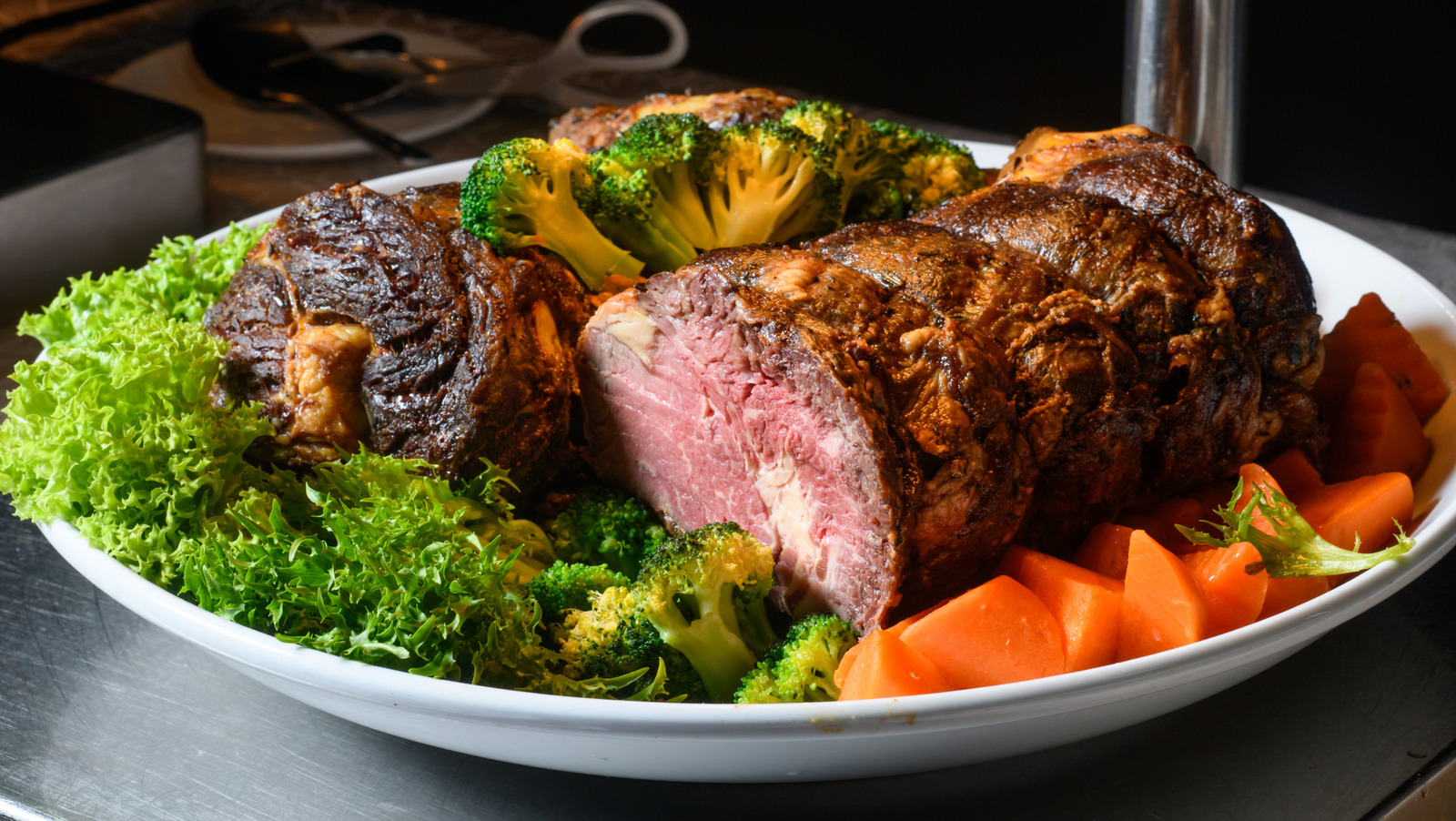
"The most affordable cuts of meat tend to be tough, coming from areas of the animal that work hard, and thus forming lots of connective tissue. That connective tissue is made up of collagen, and when collagen gets heated up past 160 degrees Fahrenheit, it melts into lusciously rich gelatin. This is how tough cuts like brisket or ribs get so tender and moist as they cook for hours."
"The great thing about roasting cheaper cuts of meat is that there is one for every occasion. The first place to look is anything that comes from the shoulder. This would be pork shoulder or chuck for beef. Meat from the shoulder not only has lots of connective tissue, but it also contains lots of fat, which means there is little risk of overcooking these cuts. That fat also translates to lots of flavor."
Expensive cuts are not necessary to produce a tender, impressive roast. Tough, inexpensive cuts contain large amounts of connective tissue that becomes gelatin when heated past 160 degrees Fahrenheit, producing rich, moist results. Long roasting periods break down collagen and transform tough muscles into tender meat. Shoulder cuts such as pork shoulder or beef chuck combine connective tissue with substantial fat, which prevents overcooking and adds flavor. Cuts like shanks can also be slow roasted successfully despite being better known for braising. Slow roasting for hours often yields more flavor than pricey, lean cuts.
Read at Tasting Table
Unable to calculate read time
Collection
[
|
...
]